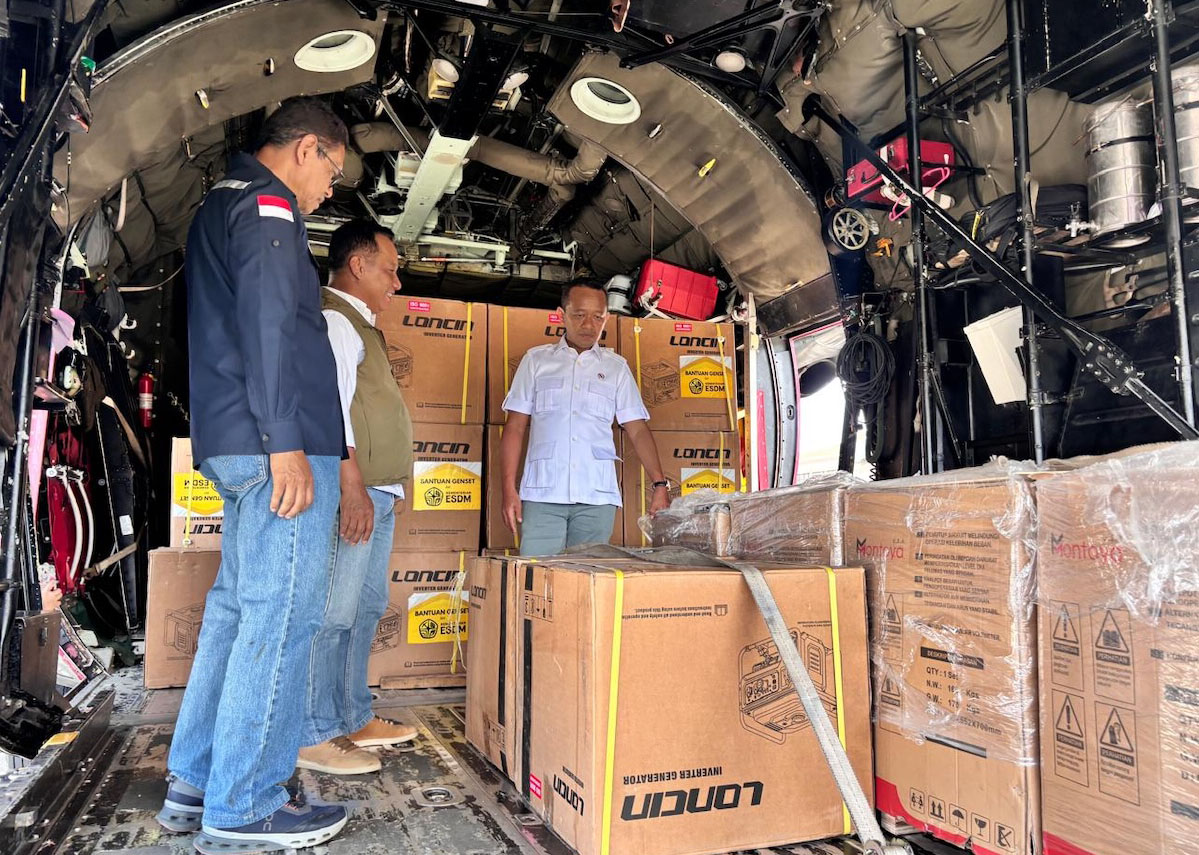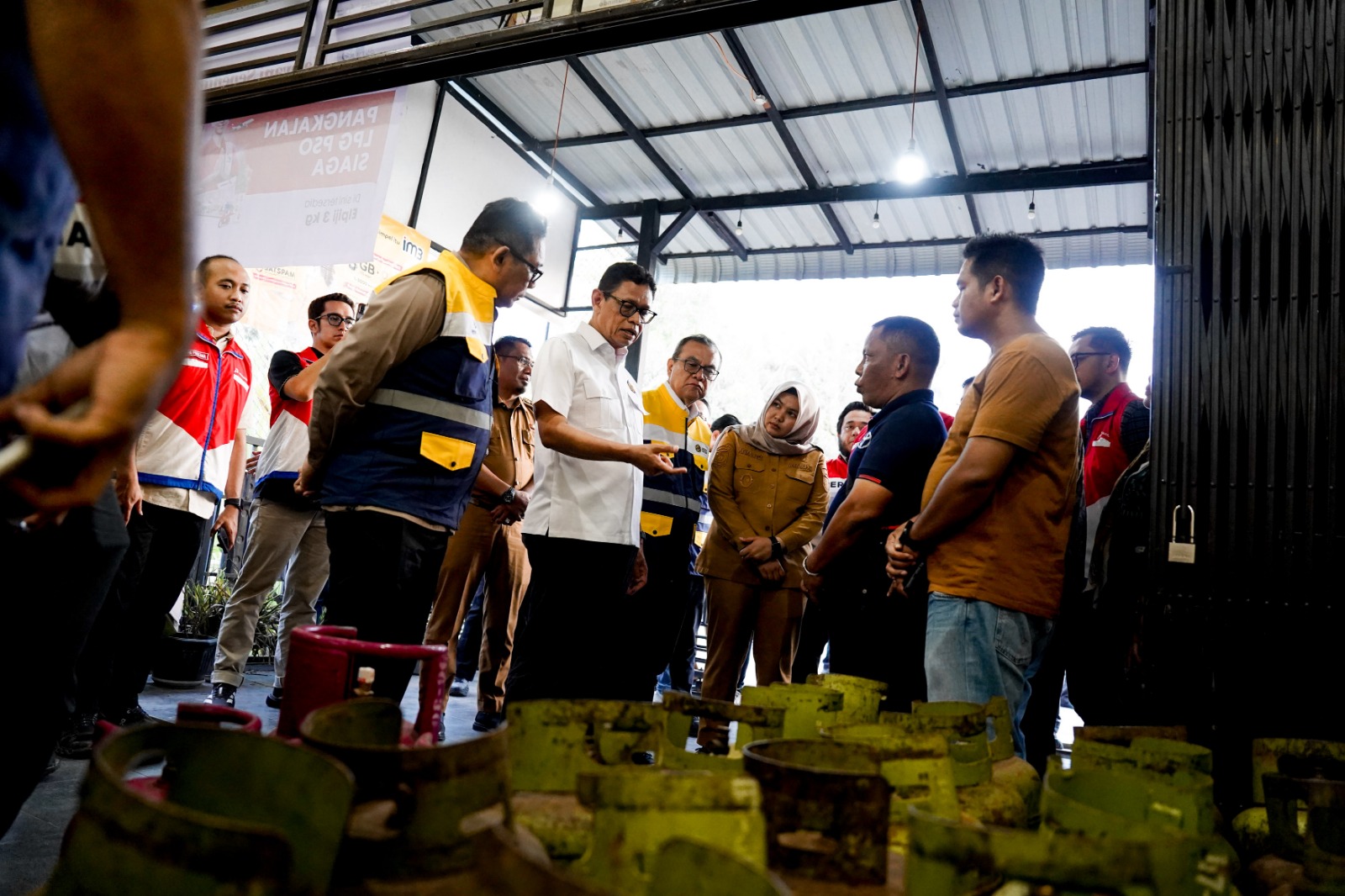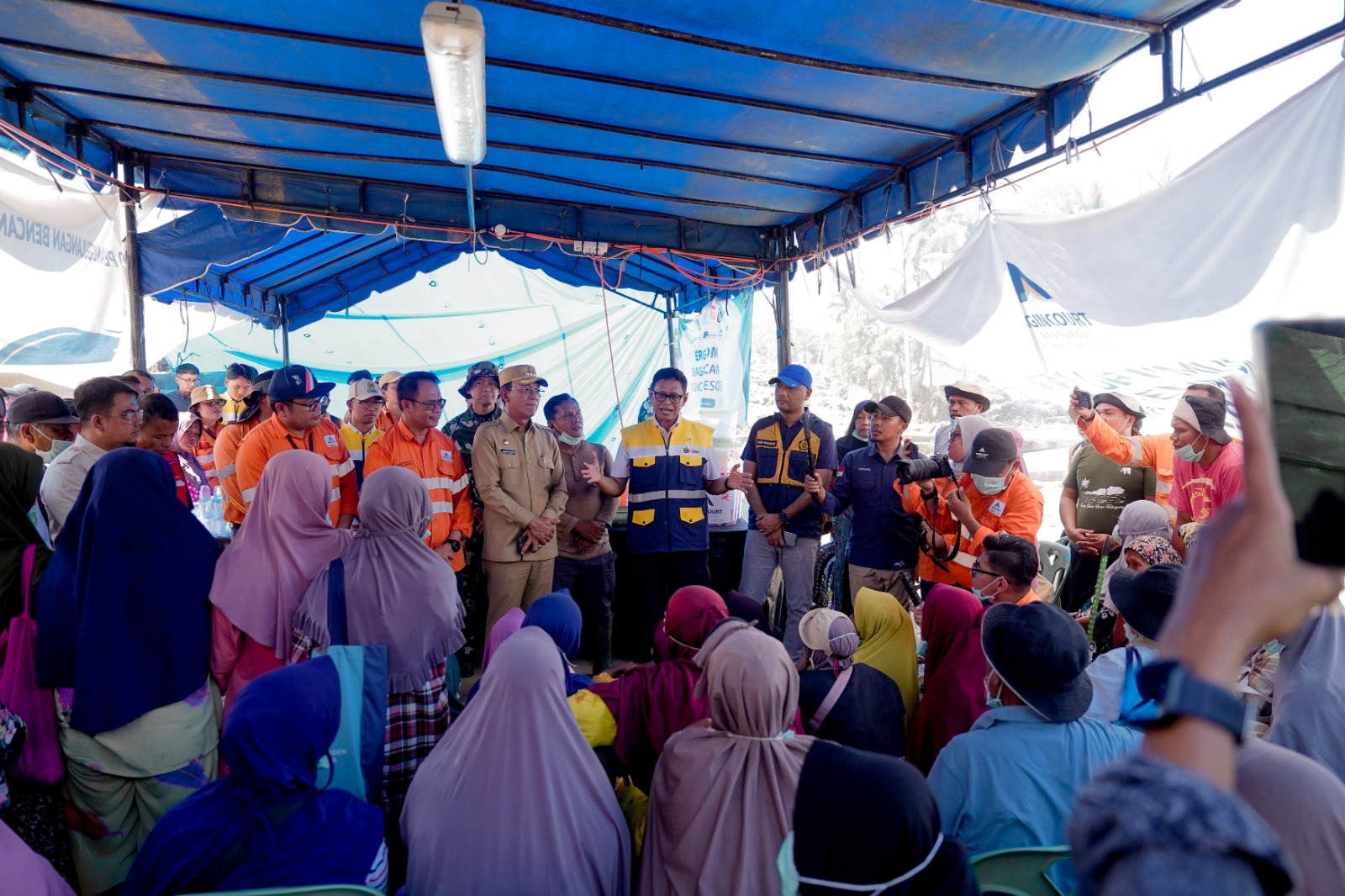
Biomass Co-firing of PLTU Ketapang and Sanggau Commercially Operational
MINISTRY OF ENERGY AND MINERAL RESOURCES
PRESS RELEASE
NUMBER: 355.Pers/04/SJI/2019
Date: 31 December 2020
Biomass Co-firing of PLTU Ketapang and Sanggau Commercially Operational
Palm kernel shell-based co-firing of coal-fired power plants (PLTU) Ketapang 2x10 Mega Watt (MW) and Sanggau 2x7 MW was made commercially operational on Tuesday (29/12). The official launch was carried out online and attended by Director General of New, Renewable Energy and Energy Conservation (NREEC) of Indonesian Ministry of Energy and Mineral Resources (EMR) Dadan Kusdiana.
Dadan appreciated the co-firing of both power plants because it has proved the seriousness of state electricity company PT PLN in increasing the share of new, renewable energy in Indonesia national energy mix.
"We appreciate the efforts made by PLN and Group in the Go Live Commercial Co-firing of PLTU Ketapang and PLTU Sanggau. I hope PLN and Group will continue to support the transition to renewable energy. One of the green booster programs of PLN is co-firing at existing coal power plants by using biomass or waste," Dadan said.
Co-firing is the combustion of biomass and fossil fuels at the same time in a coal or gas power plant.
Previously, PLN's subsidiary PT Pembangkitan Jawa Bali had commercially started co-firing of PLTU Paiton and PLTU Pacitan in East Java Province. Next, another subsidiary of PLN, PT Indonesia Power, also started co-firing of PLTU Jerajang in West Nusa Tenggara Province and PLTU Suralaya units 1-4 in Banten Province. Meanwhile, PLTU Ketapang and PLTU Sanggau are managed by UIKL Kalimantan, a branch of PLN responsible for electricity generation and distribution in Kalimantan Island.
"This is smart, in terms of how we can precisely understand PLN conditions from the supply dan demand sides and how the government and PLN are working hard to increase the use of renewable massively. Substitution does not necessarily mean replacing the technology and coal power plants. Co-firing can be a solution," said Dadan.
Besides supporting renewables target realization, Dadan believes that biomass co-firing, especially the one using garbage and waste, backs circular economy by producing positive effects on the development of people's economy.
"I think this is the best fit. When oversupply occurs in PLN, when we need extra jobs, when the environmental aspects have become very strong relating to reduction of greenhouse gas emissions, co-firing is one of the answers. All aspects can contribute and run," Dadan explained.
Dadan hopes PT PLN has the passion and commitment to providing more environmentally friendly energy for the country.
"I hope the co-firing of PLTU Ketapang and PLTU Sanggau will continue for a long time and be made a lesson for co-firing of other coal power plants in Indonesia. I hope this Commercial Go Live will be followed by other power plants according to the co-firing road map that we have prepared together," said Dadan.
Breakthrough to Meet Renewables Target
On the occasion, Dadan said that co-firing will positively impacts on the realization of renewable target. The Indonesian National Energy Policy has set the target for new, renewable energy use of 23% by 2025.
"With realization of about 11% in 2020, we have a lot of homework. We need to make various breakthroughs and innovations to accelerate target realization," said Dadan.
To support implementation of the co-firing program, DG NREEC has prepared an action plan, which includes the following:
1. Completion of biomass co-firing roadmap, including decision on the priority scale of coal power plant clusters;
2. Formation of technical teams in charge of advising and monitoring the commercial implementation of biomass co-firing, especially related to feedstock supply and business scheme;
3. Preparation of draft SNI (Indonesia national quality standard) for biomass pellet and solid waste; the draft is expected to be finalized in December 2020;
4. Preparation of draft EMR Ministerial Regulation on co-firing implementation, targeted to finish in first quarter of 2021; and
5. Formation of people's electricity ecosystems by involving village-owned enterprises (BUMDes) and improving cooperation with relevant state ministries/agencies to promote co-firing.
Biomass co-firing of coal power plant is not something new. Many countries have successfully co-fired their coal power plants; in fact, some countries have replaced coal with biomass by 100%.
"In the future, we'll try to reduce the existing coal power plants and replace them with cleaner power plants," Dadan added.
"We've never hoped the program will run for a short time. The biomass percentage must also be increased. For this reason, we must jointly form and develop the upstream sector, namely feedstock supply," Dadan concluded. (IY)
Head of Bureau of Communication, Public Information Services, and Cooperation
Agung Pribadi (081122135)
Share This!






